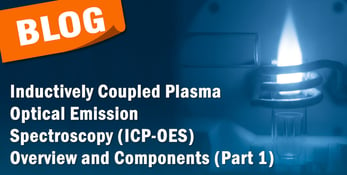 Inductively Coupled Plasma Optical Emission Spectrometry is a multielement technique that uses a high temperature plasma to excite atoms within the sample to the point where they emit wavelength-specific photons of light. Each element emits its own characteristic wavelengths and the number of photons emitted is directly proportional to the concentration of that element in the sample.
Inductively Coupled Plasma Optical Emission Spectrometry is a multielement technique that uses a high temperature plasma to excite atoms within the sample to the point where they emit wavelength-specific photons of light. Each element emits its own characteristic wavelengths and the number of photons emitted is directly proportional to the concentration of that element in the sample.
All ICP instruments (OES or MS) function as simple comparators and therefore rely on calibration with standards before accurate quantitative results and are produced. Generally speaking, samples and standard are introduced into the ICP instrument in liquid form. This is accomplished by spraying a fine mist of the liquid into the plasma. The extremely high temperature (~ 10,000 0K) of the plasma source then excites atoms within the sample to the point where they emit their characteristic wavelengths of light. Once the light is emitted from the sample it is directed into a high resolution optical spectrometer where the individual wavelengths of light are separated from one another. This step is critical because the degree to which adjacent wavelengths of light can be separated and the stability of their resulting emission will affect virtually every performance characteristic that the ICP spectroscopist relies upon to generate high quality results. Once the spectrometer has done its job of separating adjacent wavelengths of light, it is the job of the instruments detector to convert the photons into electrons, which can be handled by today’s sophisticated electronics. Finally, the user interface supplied with the instrument provides the user with all the information needed to select various wavelength, calibrate their instrument and provide the analytical results from the samples analyzed by the operator.
There are a number of different ICP-OES designs available today that share many similar components, such as nebulizer, spray chamber, plasma torch, but can differ quite significantly in the design of the plasma generator, plasma viewing optics, spectrometer, and detection system. We will cover these components in Part 2.
Interested in more information on ICP-OES? Contact us today

